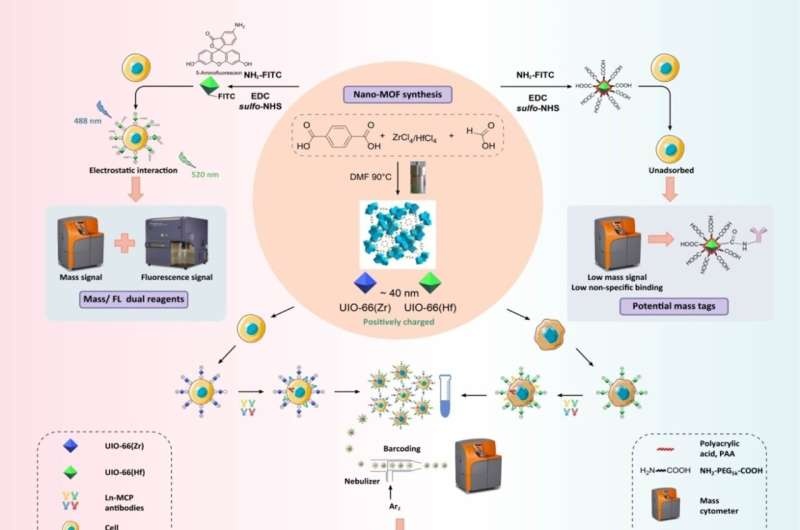A novel interpretation of non-specific binding (NSB) in biosensing has been uncovered by researchers who have used this often-dreaded occurrence to develop a potent mass cytometry barcoding method.

Monetizing Annoyance
Though it is utilised to great effect in molecular diagnostics, biosensing has been plagued by the confounding factor of non-specific binding (NSB). The Suzhou Institute of Biomedical Engineering and Technology (SIBET) of the Chinese Academy of Sciences has flipped this challenge around on itself, though.
The team has taken advantage of the well-established positive charge of a metal organic framework, UIO-66(Hf/Zr), to establish a new strategy for barcoding mass cytometry that is based on non-selective binding of negatively charged cells by the MOF. This novel strategy not only addressed the problems faced by NSB, but also provided us with a new angle to consider such an undesirable event as a potential advantage for advance healthcare applications in tissue-engineering.
From Annoyance to Opportunity
Although nanoparticle-based metal tags have been applied to enhance mass cytometry signal intensity, serious NSB of nanoparticle with cells largely blocks the use. The SIBET researchers turned this challenge into an opportunity.
Taking advantage of the nine naturally abundant stable isotopes of Zr and Hf, we theoretically can obtain up to 84 unique mass barcodes simply by non-specific binding between positively charged UIO-66 and negatively charged cells. We thus make available the first universal cell surface barcoding strategy that does not rely on specific cell surface molecules in order to barcode cells for mass cytometry.
The researchers clearly showed separate sets of individual populations when the cell samples were barcoded with UIO-66(Zr) and UIO-66(Hf), thus verifying this method. In addition, the UIO-66 barcoding was highly compatible with metal chelated polymer (MCP) mass tags in single-cell multiplexing so as not to conflict the rare earth isotope channels selected for MCP antibody tags.
Conclusion
The discovery of SIBET researchers not only breaks the traditional concept of non-specific binding but also turn it to a powerful tool for mass cytometry barcoding. This novel approach not only circumvents the drawbacks of other techniques but also permits to use materials that were discarded due to NSB in new applications. The researchers have shown at least this silver lining to one manifestation of it—no free launch, the possibility that a kind of serendipity could in turn give rise to scientific discoveries from new quarters, as we highlight other exciting emerging trends across biomedical engineering.
